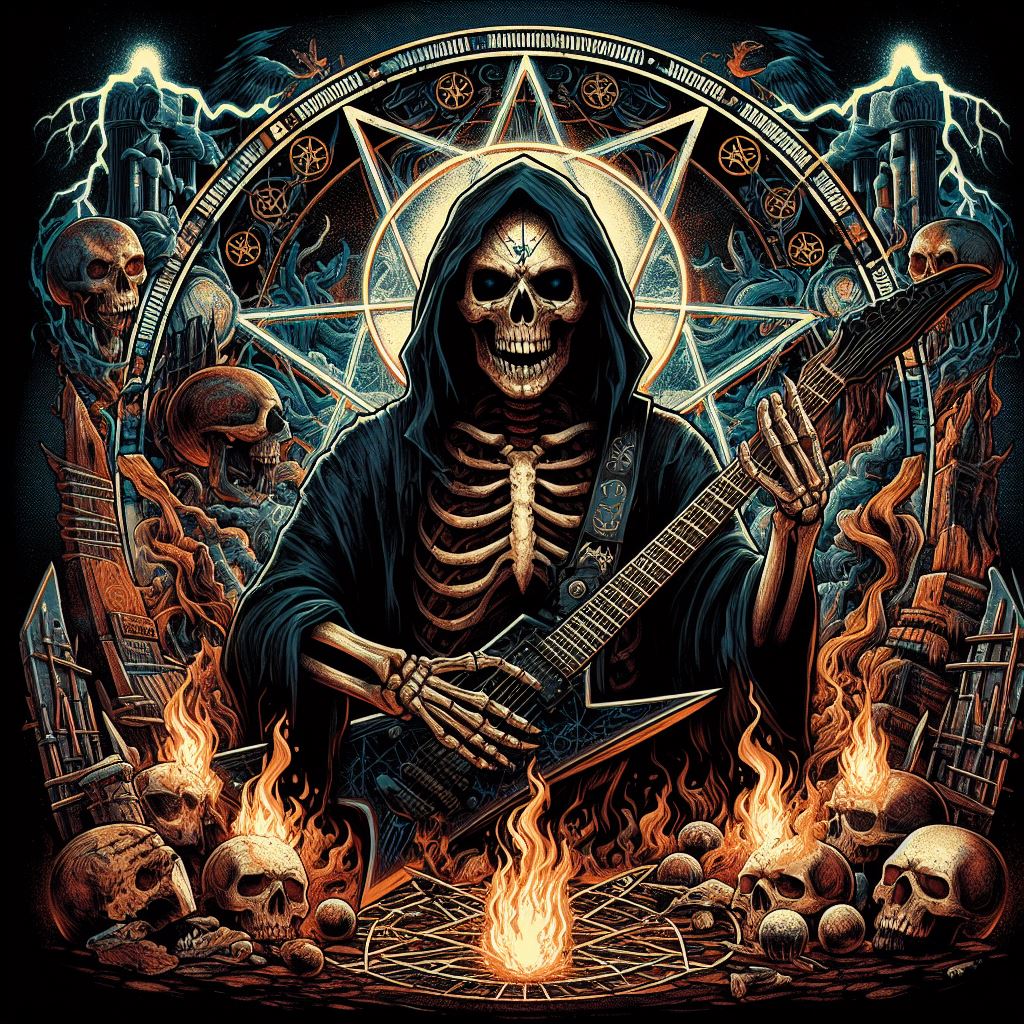Sailing the high seas of heavy metal for over four decades, Running Wild holds a unique position in the genre. Emerging from the vibrant German metal scene of the 80s, they rose to prominence not just for their powerful music, but also for pioneering the now-beloved subgenre of pirate metal. This article charts the course of Running Wild, from their early days under a different name to their iconic pirate anthems and beyond.
Granite Hearts Set Sail (1976-1983):
The story of Running Wild begins in 1976, not on a pirate ship, but in a Hamburg rehearsal space. Back then, they were known as Granite Heart, a name reflecting their early influences – bands like Black Sabbath and Judas Priest. This period saw numerous lineup changes, with the one constant being Rolf Kasparek, the band’s guitarist and vocalist, better known by his stage name “Rock ‘n’ Rolf.” It was during this time that Running Wild’s musical identity began to take shape, characterized by Kasparek’s distinctive raspy vocals and galloping guitar riffs.
Gates Open to Success (1984-1987):
In 1979, the band ditched the Granite Heart moniker and adopted the more evocative Running Wild, inspired by the Judas Priest song of the same name. Signing with Noise Records in 1984, they unleashed their debut album, “Gates to Purgatory.” The album showcased a brand of heavy metal heavily influenced by the New Wave of British Heavy Metal (NWOBHM), featuring blazing guitar solos, powerful drumming, and Kasparek’s signature vocals. While the lyrics on this and their follow-up album, “Victim of Fate” (1985), leaned towards the satanic themes common in metal at the time, Running Wild was already showcasing their musical prowess. Tracks like “Adrian (S.O.S.)” and “Evil Spirit” became early fan favorites, establishing them as a force to be reckoned with in the burgeoning German metal scene.
Raising the Jolly Roger (1987-1993):
The turning point in Running Wild’s career came with their third album, “Under Jolly Roger,” released in 1987. This record marked a significant thematic shift, with Kasparek abandoning the occult in favor of all things pirate. The title track, a rollicking anthem celebrating the life of a swashbuckler, became their signature song. Songs like “Cannonball” and “Galloping With The Devil” further cemented the pirate theme, complete with Kasparek sporting an eyepatch for the album artwork. This thematic switch was a masterstroke, attracting a wider audience and solidifying their place as the pioneers of pirate metal.
The following albums, “Death or Glory” (1989) and “Blazon Stone” (1991), continued the pirate theme with great success. Tracks like “Pirate Queen” and “The Brotherhood” became staples of their live shows, characterized by their infectious energy and Kasparek’s theatrical stage presence. Running Wild toured extensively throughout Europe, building a dedicated fanbase along the way.
Beyond the Seven Seas (1994-2012):
The band continued to explore the pirate theme throughout the 90s, with albums like “Pile of Skulls” (1992) and “Black Hand Inn” (1994) maintaining their signature sound. However, the later part of the decade saw a shift towards more historical themes, with albums like “Masquerade” (1995) featuring songs inspired by historical figures like Genghis Khan and William the Conqueror.
Running Wild disbanded in 2009 after a farewell tour, citing Kasparek’s desire to pursue other musical endeavors. However, the call of the open seas proved too strong, and the band reformed in 2011. Since then, they have released two more studio albums, “Shadowmaker” (2012) and “Resilience” (2016), showcasing a renewed energy while staying true to their roots.
A Lasting Legacy:
Running Wild’s influence on heavy metal is undeniable. They are considered one of the “big four” of German power metal alongside bands like Helloween and Grave Digger. Their unique blend of catchy melodies, powerful riffs, and Kasparek’s charismatic vocals continues to inspire legions of musicians. More importantly, they are the undisputed pioneers of pirate metal, a subgenre that has seen a surge in popularity in recent years.

Leave a Reply
You must be logged in to post a comment.